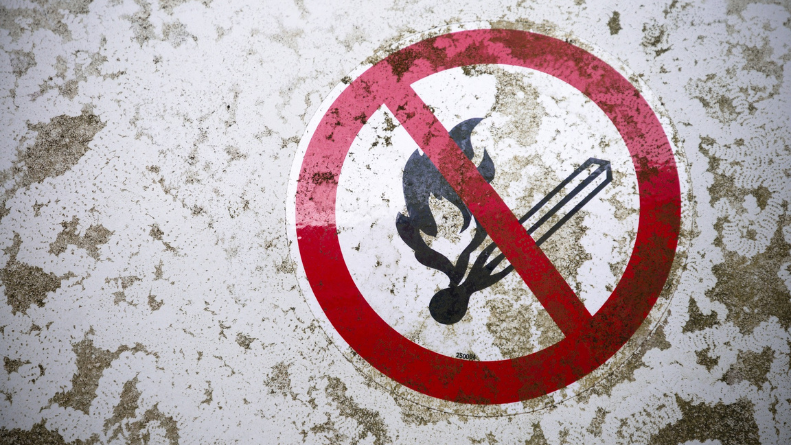New Fire Safety Regulations for High-Rise Flats
Since several of the recommendations made to the government in the Grenfell Tower Inquiry Phase 1 report call for a change in the legislation, they are adopting rules under article 24 of the Regulatory Reform (Fire Safety) Order 2005 (Fire Safety Order) to put them into effect.
These rules will legally oblige those in charge of apartment buildings with several stories to send relevant data to fire departments so that they may better prepare for and respond to emergencies.
In addition, the requirements will necessitate that responsible individuals in high-rise structures and buildings over 11 metres in height offer extra safety measures in multi-occupied residential complexes.
Holders of responsibility in multi-occupied dwellings are obligated by law to distribute fire safety information and drill procedures to all occupants. It’s important to note that the rules only apply to pre-existing structures, therefore, new construction may have different requirements.
Responsible persons in high-rises must comply with the following regulations
Building Plans: provide their local Fire and Rescue Service with up-to-date electronic building floor plans and to place a hard copy of these plans, alongside a single page building plan which identifies key firefighting equipment, in a secure information box on site.
External Wall Systems: provide to their local Fire and Rescue Service information about the design and materials of a high-rise building’s external wall system and to inform the Fire and Rescue Service of any material changes to these walls. Also, they will be required to provide information in relation to the level of risk that the design and materials of the external wall structure gives rise to and any mitigating steps taken.
Lifts and other Key Fire-Fighting Equipment: undertake monthly checks on the operation of lifts intended for use by firefighters, and evacuation lifts in their building and check the functionality of other key pieces of firefighting equipment. They will also be required to report any defective lifts or equipment to their local Fire and Rescue Service as soon as possible after detection if the fault cannot be fixed within 24 hours, and to record the outcome of checks and make them available to residents.
Information Boxes: install and maintain a secure information box in their building. This box must contain the name and contact details of the Responsible Person and hard copies of the building floor plans.
Wayfinding Signage: to install signage visible in low light or smoky conditions that identifies flat and floor numbers in the stairwells of relevant buildings.
Those in charge of 11-meter-or-higher residential structures must do the following:
- Fire Doors: undertake annual checks of flat entrance doors and quarterly checks of all fire doors in the common parts.
Owners or managers of any building with two or more units of residential space must comply with the following in all cases:
- Fire Safety Instructions: provide relevant fire safety instructions to their residents, which will include instructions on how to report a fire and any other instruction which sets out what a resident must do once a fire has occurred, based on the evacuation strategy for the building.
- Fire Door Information: provide residents with information relating to the importance of fire doors in fire safety.
The Government’s plan to achieve its regulatory goals
An independent inquiry into the Grenfell Tower fire was launched by the government in August 2017. In October of 2019, the Inquiry released its first Phase report. The government adopted the report’s recommendations in principle the day it was released.
A few of the suggestions were aimed at the government and would have to be codified into law for full implementation. Most of these suggestions will be implemented by the Fire Safety (England) Regulations 2022.
Context for new regulations
The Fire Safety Consultation was held by the Home Office from July 20th, 2020, through October 12th, 2020, in response to the Independent Review of Building Regulations and Fire Safety. In order to put into effect the recommendations of the Inquiry, which necessitated a change in the law, the Fire Safety Consultation said in section 2 that rules would be laid under article 24 of the Fire Safety Order. During the Consultation, participants also offered suggestions for practically enacting the recommendations.
With the publication of the government’s answer to the Fire Safety Consultation on March 17, 2021, it became clear that these ideas had widespread support. These regulations will be put into effect to implement the Inquiry’s recommendations after the Fire Safety Act of 2021 goes into effect and makes it clear that the Fire Safety Order applies to the structure, external walls, and any common parts of premises, including all flat entrance doors, for buildings containing two or more sets of domestic premises.
Improve public safety from the risk of fire by better supporting compliance and effective enforcement in all regulated premises; these regulations complement the Building Safety Act amendments to the Fire Safety Order and the government’s update of supporting guidance issued under the Fire Safety Order.
The Fire Safety (England) Regulations 2022 are only applicable to England and not the whole of the UK and cam into effect on 23 January 2023.
Who is considered to be a responsible individual?
The person who is responsible for the safety of others and themselves in regulated premises can be considered the “responsible person.”
This is often the building’s owner, or in the case of private residences, the person with the most say over the property. Most of the Fire Safety Order’s obligations are placed on the responsible person.
Some restrictions apply only to high-rise buildings
The majority of the Inquiry’s suggestions concerned high-rise structures. In England, a high-rise building is generally defined as being at least 18 metres tall (or at least seven stories). At this height, for instance, building codes become more stringent and fire defence strategies evolve.
To guarantee the Fire Service has the information it needs to respond to even the most complicated fires, the regulations should only compel responsible citizens to communicate information electronically about their building with Fire and Rescue Services.
In order to make people feel more secure in their own homes, fire safety instructions and information on the significance of maintaining fire doors will be provided to all residents of apartment buildings and other multi-occupied residential buildings with common parts, regardless of the building’s height.
Costs
There is also a comprehensive impact assessment that was written and released by the government. Any costs that arise from these regulations should result from the new activity to improve a building’s overall fire safety and from purchasing new items (such as an information box or signage for the building).
Personal Emergency Evacuation Plans (PEEPs)
These rules will not adopt the two PEEP-related suggestions made in the Inquiry. Between June 8 to July 19, 2021, the government held a separate consultation on the topic of PEEPs. In addition, a reply to this request for input is now available on the government’s website if you wish to view it.
Having PEEPs mandated in high-rise residential buildings is fraught with significant challenges, as the PEEPs consultation made very evident. Since this is such a pressing matter, the government has solicited feedback on a proposed alternative set of measures to implement the findings of the PEEPs-related inquiry. The government is now reviewing all of the responses to this consultation (which has since ended).
The government wants to deal with evacuation from high-rise and other residential buildings as a whole because there is a clear link between the Inquiry’s suggestion on evacuation preparations and the problem of PEEPs.
The people in charge will have to give tenants written fire safety instructions that tell them what to do in case of a fire and remind them of the building’s current evacuation procedure.
ARE YOU READY TO START INVESTING?
Subscribe to our mailing list now for exclusive deals, investment guides and the latest information from the property market.







